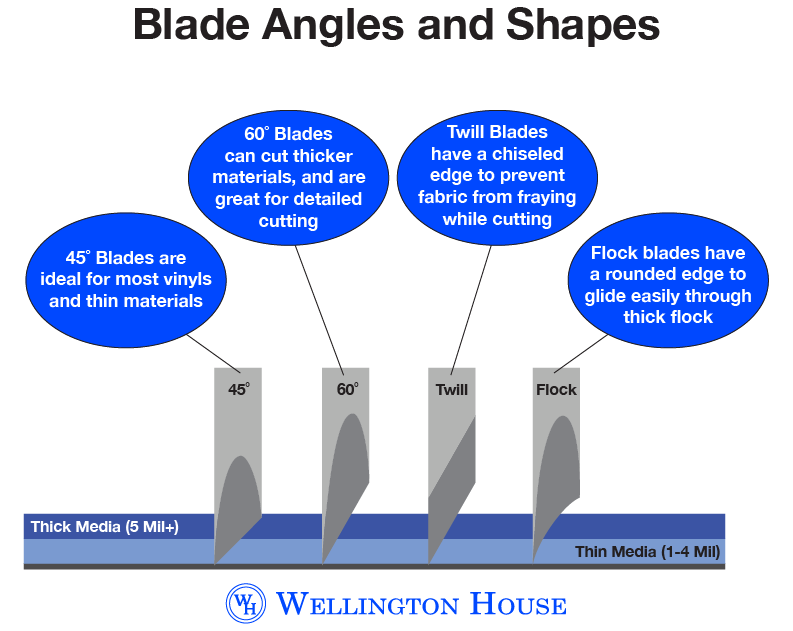Choosing the right blade for the HTV you’re cutting is pivotal to a successful cut job. Did you know there is more than one blade option? Do you know what each one is intended for? It’s been awhile since we discussed this ever-so-important topic so let’s dive in and cover the basics…
Which Blade Angle Should I Use?
The two most common blade angles are 45° and 60°. There are other angles available for specific materials like Flock or Twill but in general you will use the 45° or 60°. Here is a helpful chart to see the differences and features of each blade:

So now that you’ve determined which blade to use, make sure it is sharp. Most blades are made from Tungsten Carbide, which is extremely brittle. Even though it is one of the hardest substances known to man, it becomes susceptible to damage when it is ground to the fine edge needed for cutting heat transfer materials. Because of this, please inspect the blade right out of the box and even after your first cut. Any damage will not be visible without a magnifying glass so make sure you always have one handy next to your blade supply.
Ready To Cut! . . . .Not.Just.Yet.
We know, we know, time is money. However, money will be wasted if we don’t make the necessary adjustments to ensure a successful cut. So what now? Make sure you have the proper offset. What is offset? Offset is the measurement that determines the blade’s turning radius and compensation for distance while turning corners. Say what??? Check out this illustration for a better understanding:

Blade manufacturers each have their own recommended offsets depending on the material you’re using. You can find these as well as Force and Speed recommendations on our website by going to the specific material you are cutting. As shown in the example below, the offset for Stahls’ UltraWeed™ is 0 on a Graphtec cutter using a 45° blade.

Now You’re Ready To Cut!
Here are some helpful blade tips as you navigate the cutting process:
Always start with a low force setting and do a test cut
If the initial cutting force is set too high, your blade can penetrate the backing or carrier sheet of the material
High cutting force can damage the cutting strip or roller underneath – If you make this mistake, the damage is instant and reducing the force AFTER the damage still leaves you with a damaged blade
Use undamaged scraps of material for testing purposes. If you use scraps with uneven edges, your blade can be damaged during testing
Use extreme caution when removing the blade and blade holder to ensure the blade does not make contact with any part of your cutter to avoid damage
Blades should always be stored separately with tips protected
When cutting thicker heat transfer materials, use one appropriate for the thickness
Keep several blades and holders ready for exchanging as you change materials.
Have more questions?




